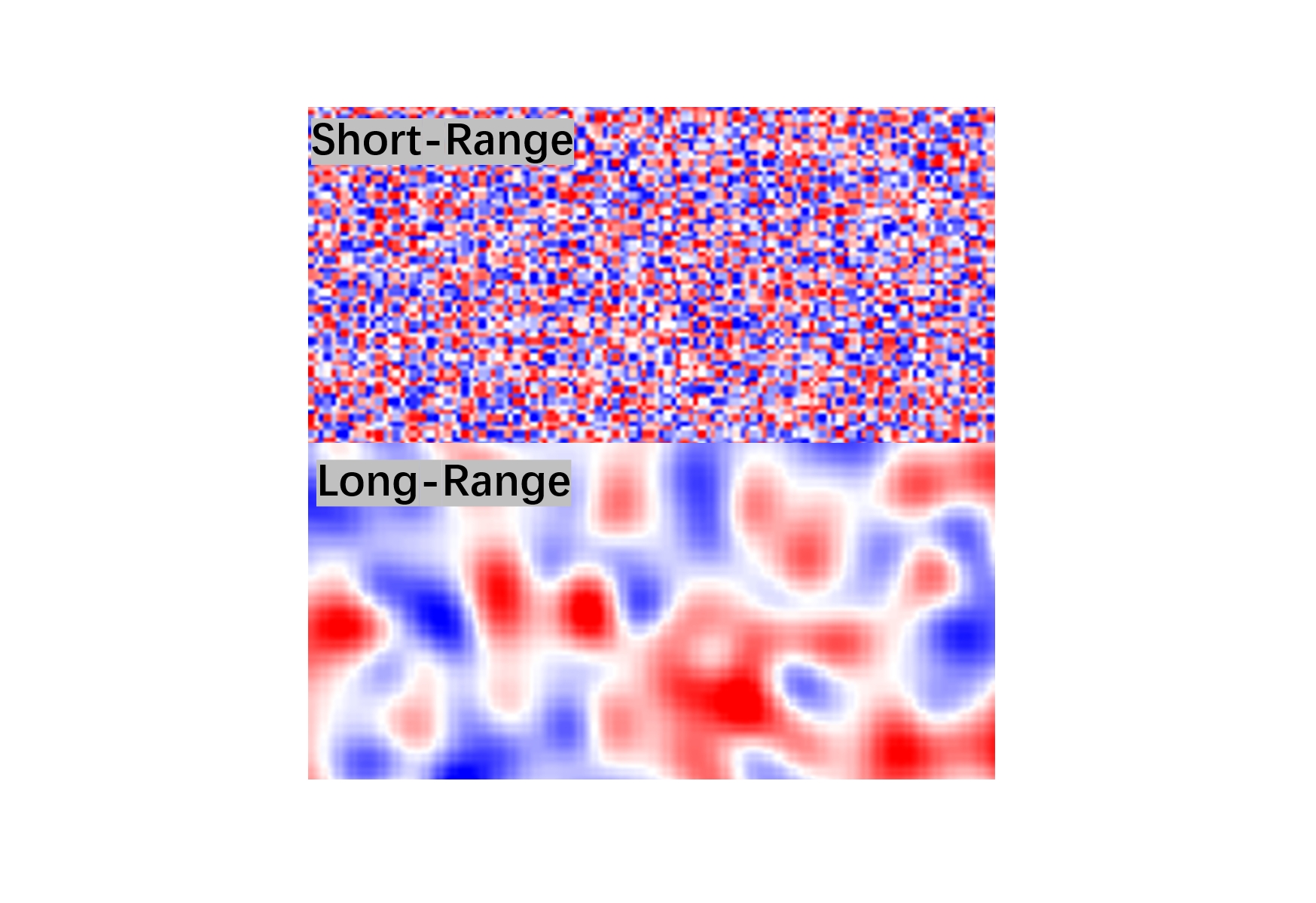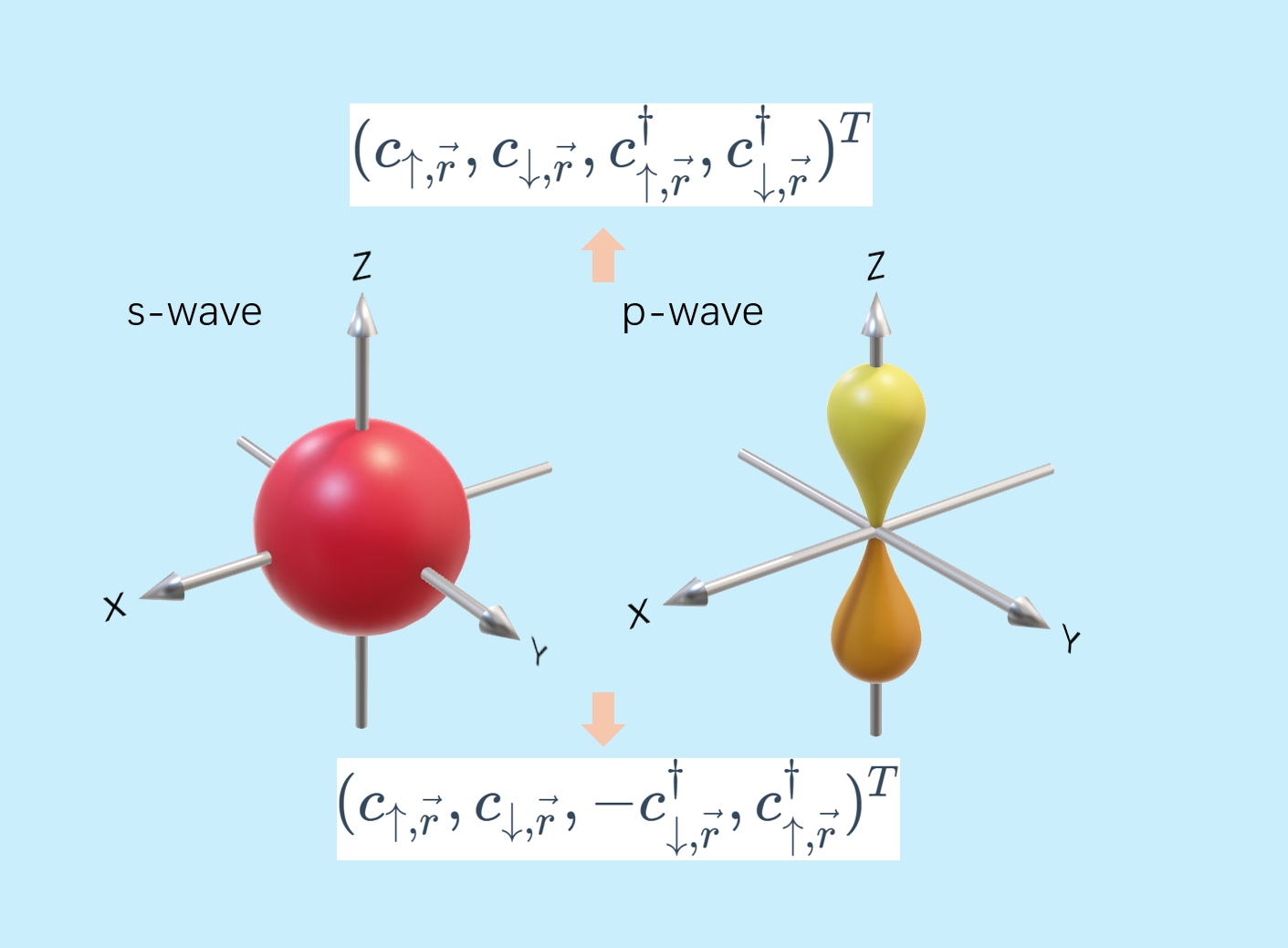BdG Equation in tight-binding approximation
X.-Z. CHEN, 17/05/2024, EIT, Ningbo
BdG Hamiltonian
Let us consider a two-dimensional electron system with Rashba spin-orbit-coupling (SOC)1, Dresselhaus SOC2, spatialy-varying magnetic texture and proximity-induced superconductivity. The time-independent Schrodinger
describing such an electron is written in real space as
where $\psi_e=[c_{\uparrow,\vec{r}},c_{\downarrow,\vec{r}}]^{T},\psi_h=[c_{\uparrow,\vec{r}}^{\dagger},c_{\downarrow,\vec{r}}^{\dagger}]^{T}$ is the wavefunction in Nambu spaces, $\Delta$ is the superconductor order parameter, $E$ are the energy eigenvalues and
where $\vec{J}(\vec{r}) \cdot \vec{\sigma}=J_x\sigma_x + J_y\sigma_y + J_z\sigma_z$,
$\vec{p}=(p_x,p_y,p_z)$ are the momentum operators, with $p_{i}=-i\hbar\partial_{i}$ ($i=x,y,z$), $m$ is the effective mass of electron, $\mu$ is the chemical potential, $\alpha$ is the strength of Rashba SOC, $\gamma$ is the strength of Dresselhaus SOC, $\vec{J}(\vec{r})$ describes the effective exchange field at position $\vec{r}$, $\vec{\sigma}=(\sigma_x,\sigma_y,\sigma_z)$ are the Pauli
spin matricies, and $\sigma_0$ is the $2\times 2$ unit matrix.
so we get
1. The Rashba effect, also called Bychkov–Rashba effect, is a momentum-dependent splitting of spin bands in bulk crystal and low-dimensional condensed matter systems (such as heterostructures and surface states) similar to the splitting of particles and anti-particles in the Dirac Hamiltonian. Remarkably, this effect can drive a wide variety of novel physical phenomena, especially operating electron spins by electric fields, even when it is a small correction to the band structure of the two-dimensional metallic state. An example of a physical phenomenon that can be explained by Rashba model is the anisotropic magnetoresistance (AMR). Read more ↩
2. The Dresselhaus effect is a phenomenon in solid-state physics in which spin–orbit interaction causes energy bands to split. It is usually present in crystal systems lacking inversion symmetry. Read more ↩
Tight-binding approximation
To approximate this Hamiltonian with a discrete model, the momentum operators can be written using finite-difference method. The system is considered as a discrete lattice with the position of a lattice (grid) point given by $\vec{r}=(x,y)=(ai,aj)$, for a square lattice, where a is the unit lattice spacing and $i,j$ are the lattice indices along $x$ and $y$ directions respectively.
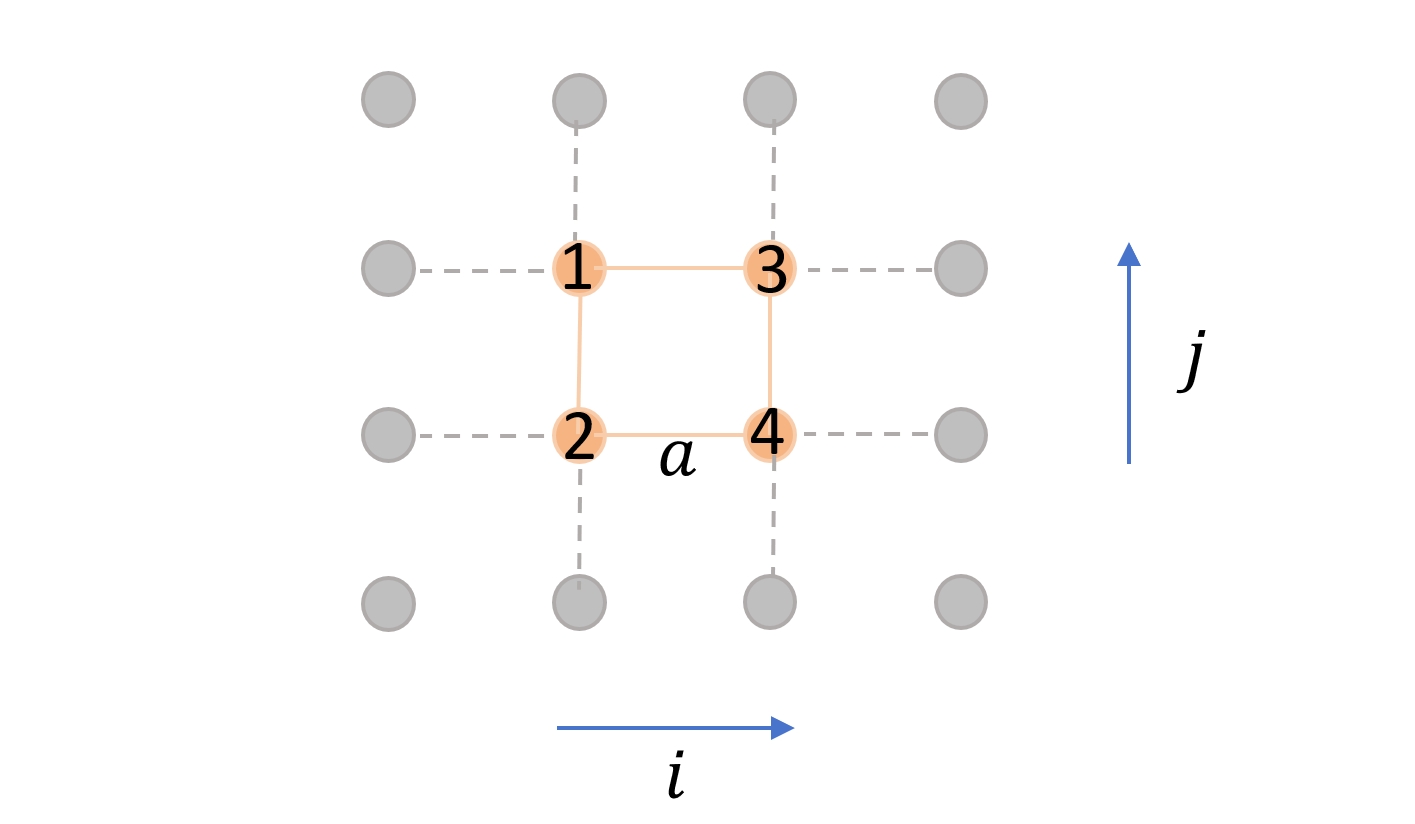
Kinetic energy
Using central difference approximation, the higher order terms in the above expression are neglected. The energy is given by
The above Hamiltonian can be written in terms of the fermionic field operators using second-quantization notation as follows
where $i,j$ are lattices indices, $\langle \rangle$ represents nearest-neighbor lattice sites, $t=\hbar^2/(2ma^2)$ is the nearest-neighbor hopping amplitude and $\sigma=(\uparrow,\downarrow)$ is the spin index.
Rashba SOC
The Hamiltonian, describing Rashba SOC in two-dimensional metallic system, is given by
Where $\alpha$ is the strength of the SOC. When we operate this Hamiltonian on the wave-function $\psi(x,y)$ at lattice point $(x,y)$, we obtain
where $a$ is the lattice spacing. The Rashba Hamiltonian can be written in second-quantization notation as
Zeeman exchange coupling
The effect of the magnetic fringing field enters through a Zeeman exchange coupling term
where $g$ is the $g$-factor of electrons and $\mu_B$ is Boltzmann constant. In second-quantized notation, $H_Z$ is written as
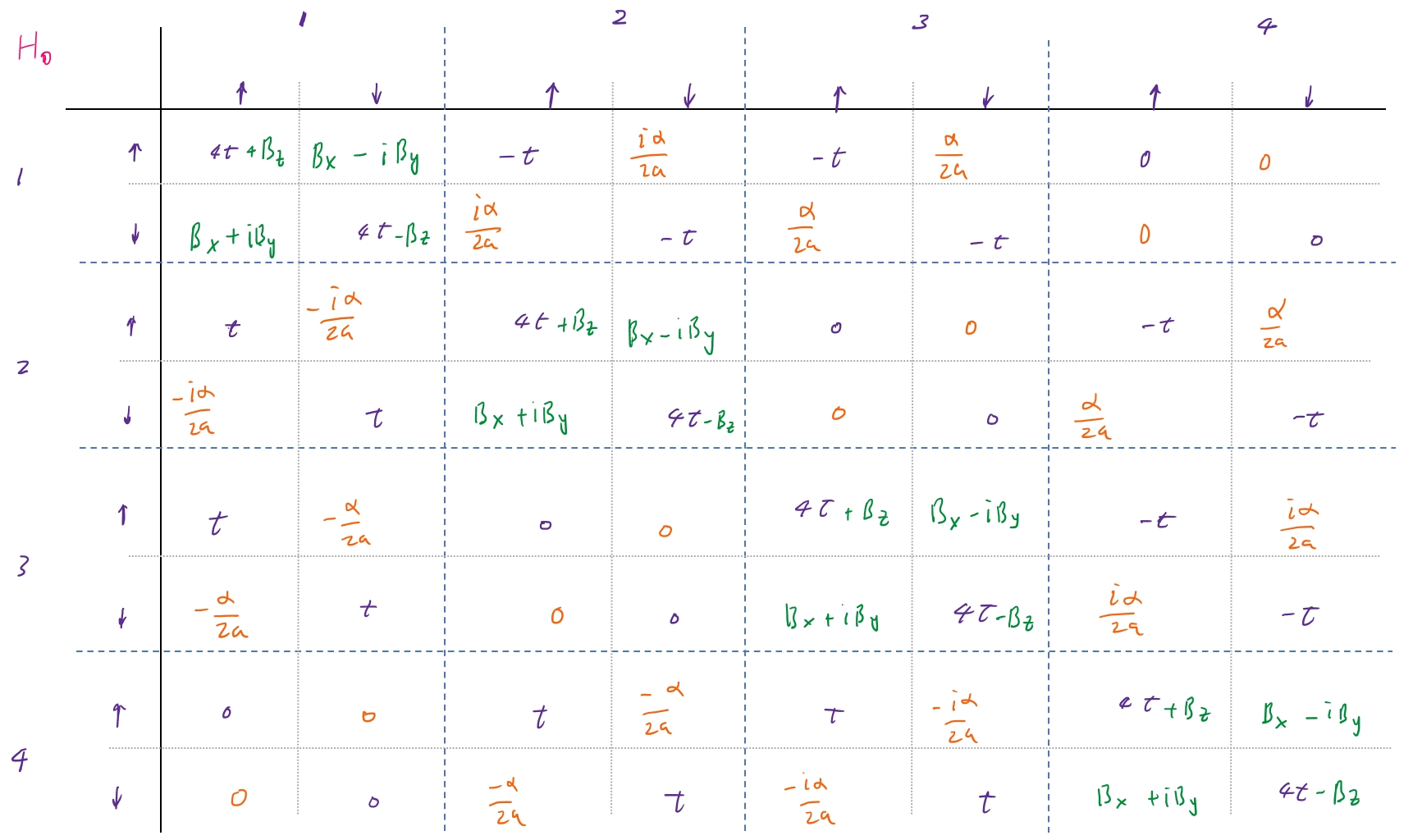
Pairing Hamiltonian
The onsite $s$-wave pairing term is written as
we can apply the transformation between particle and hole (in $k$-space, a Fourier transform) Max Hays-book Eq. (6.6)
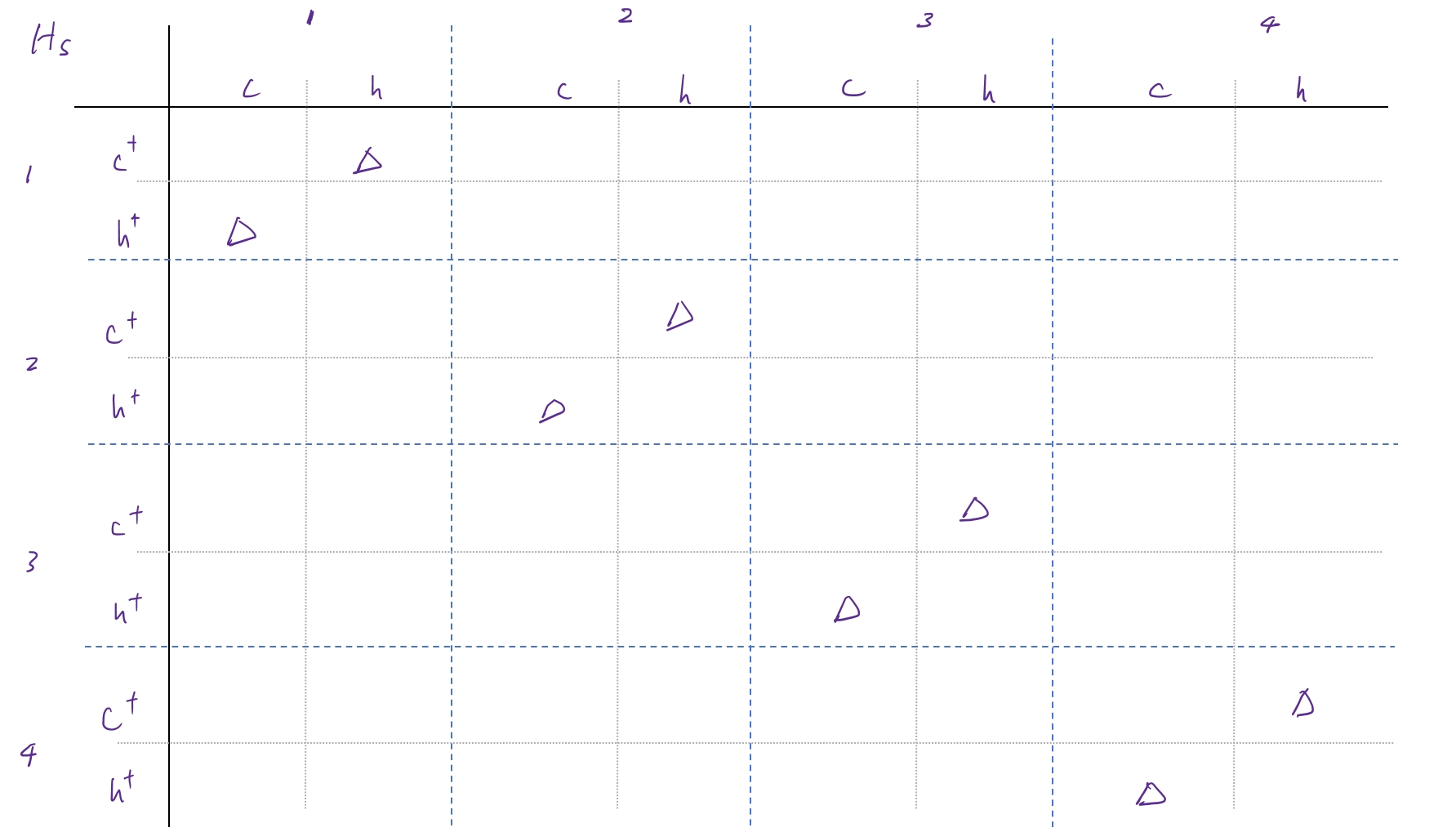
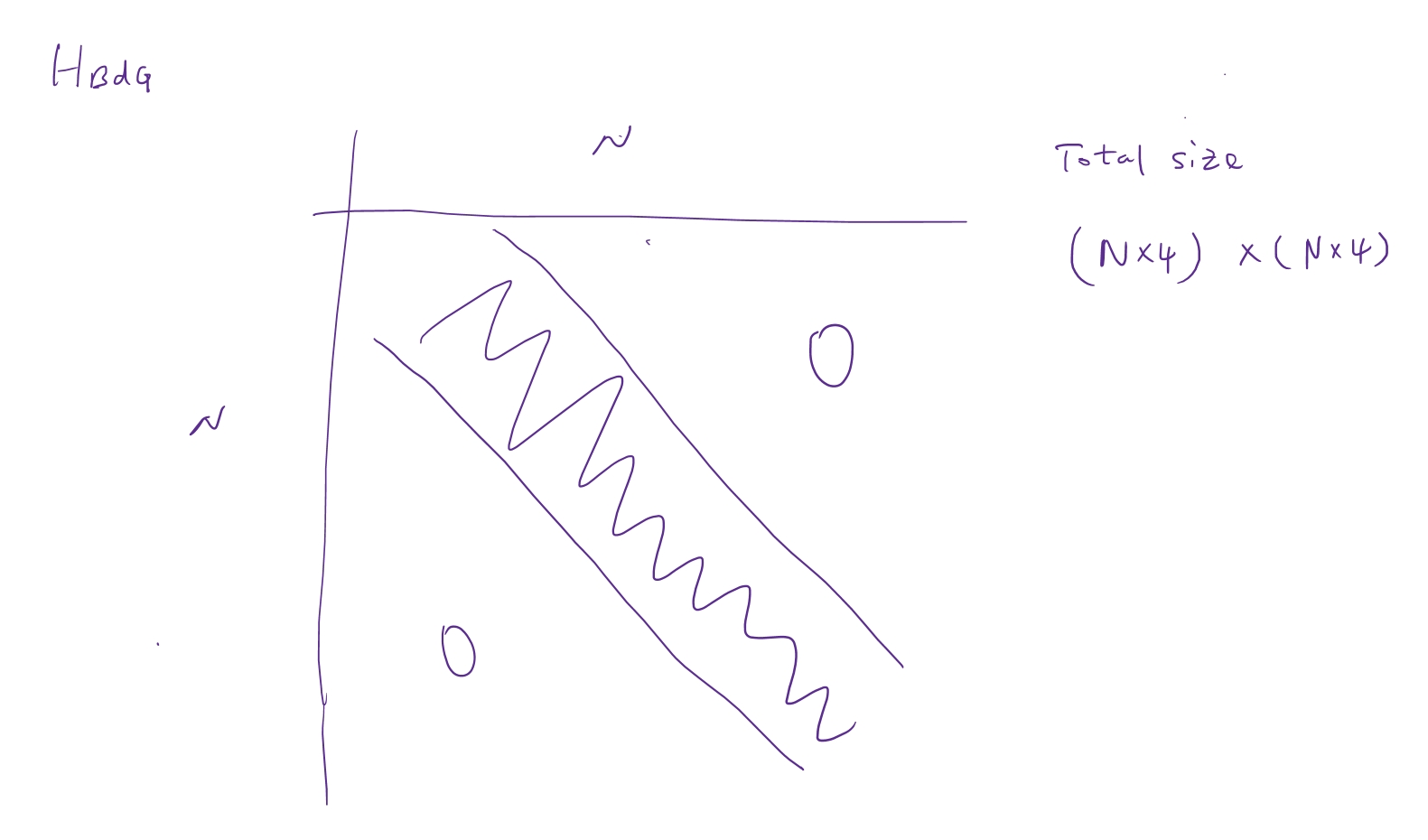
References
- The original tutorial file comes from T. Zhou: 002 BDG_Model_finite_differential_derivation_Narayan
The PDF file of this tutorial: XC_BdGToTB
